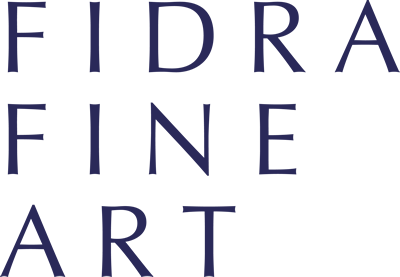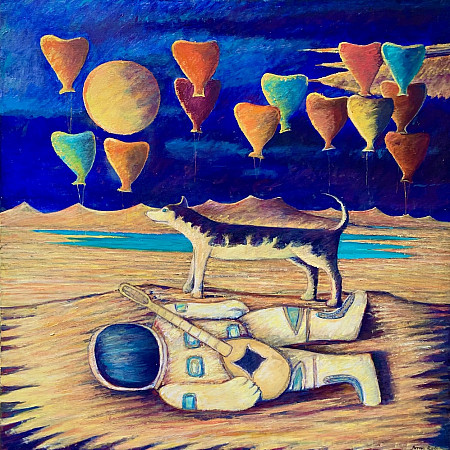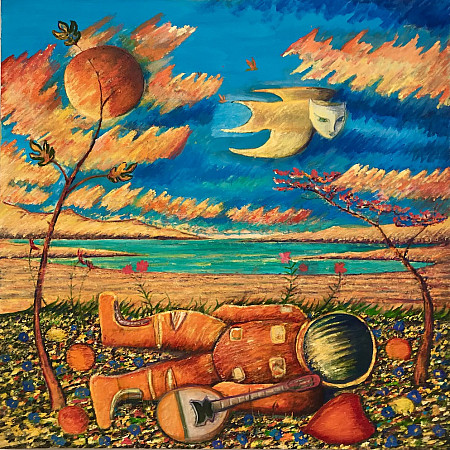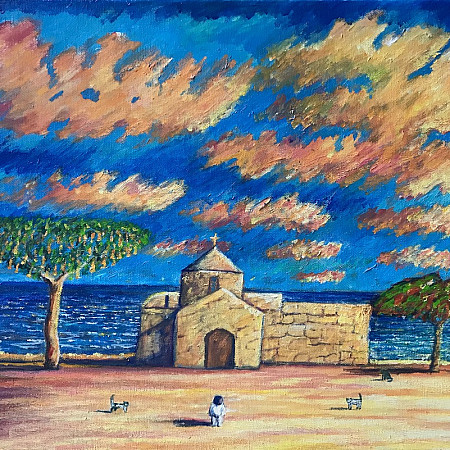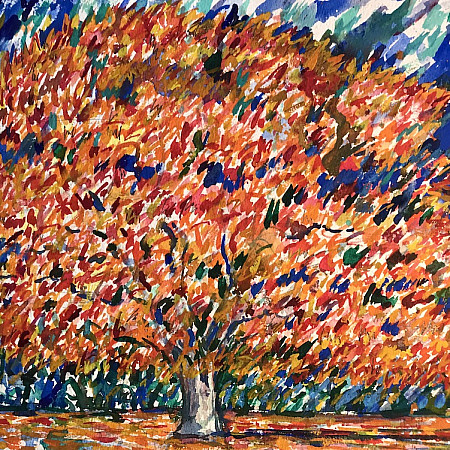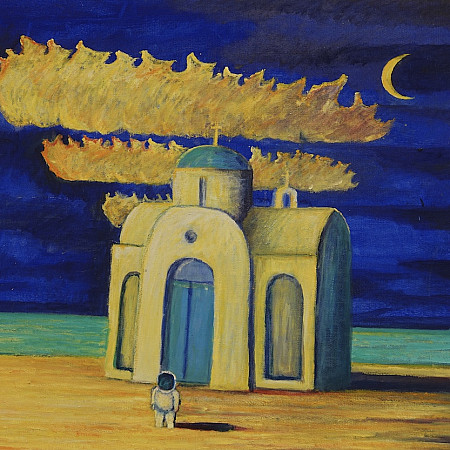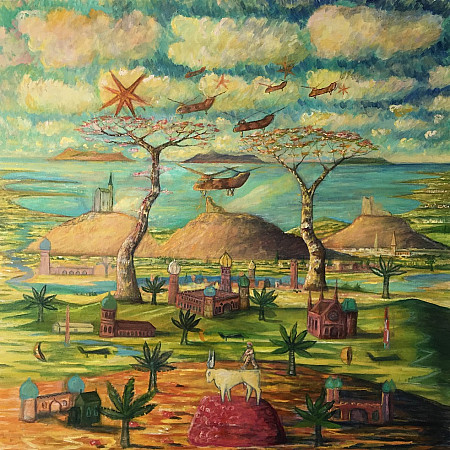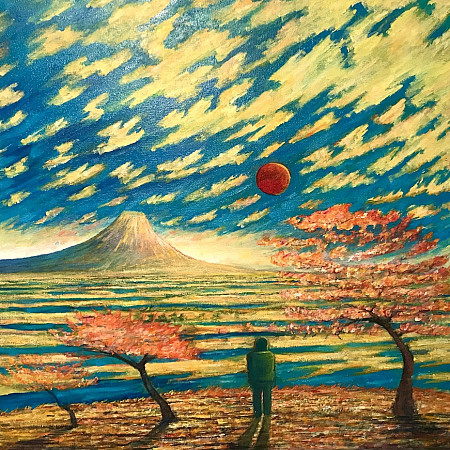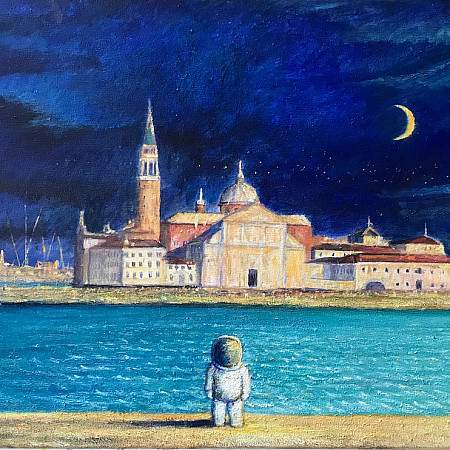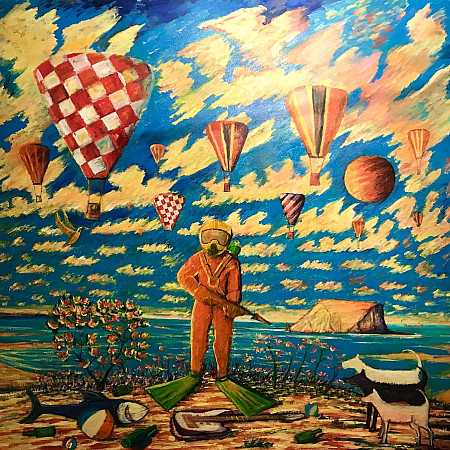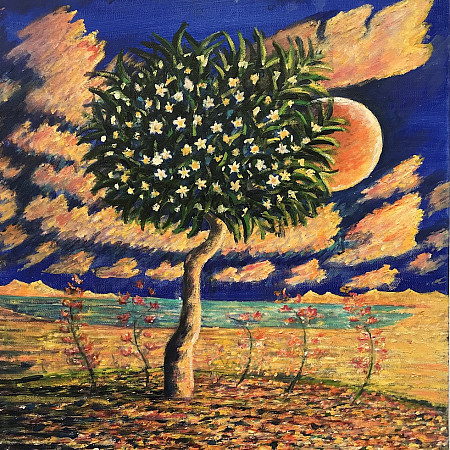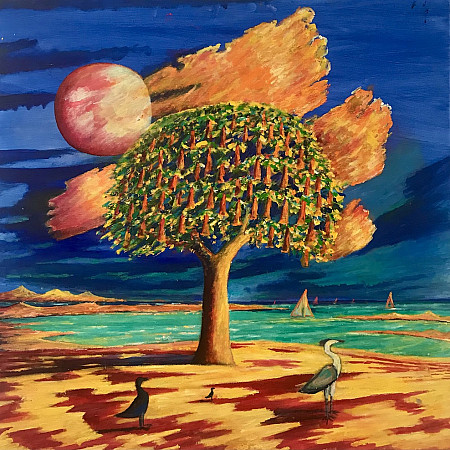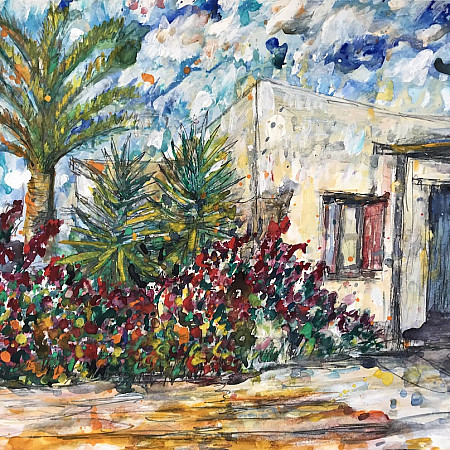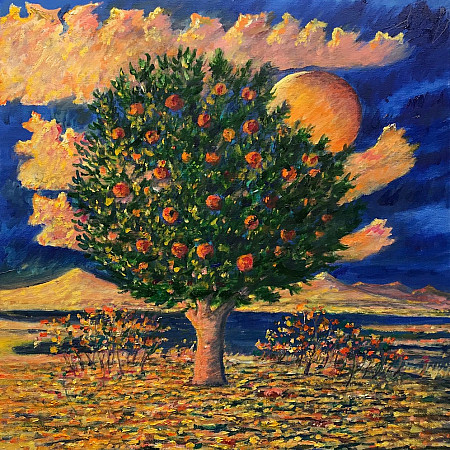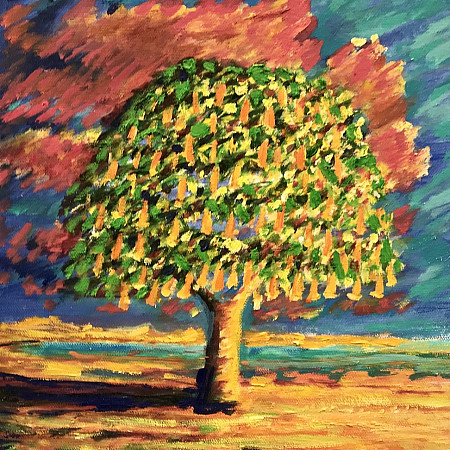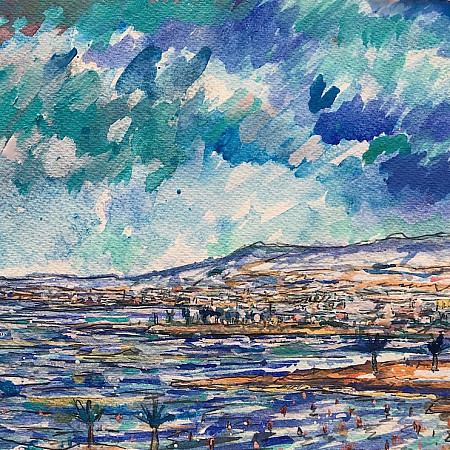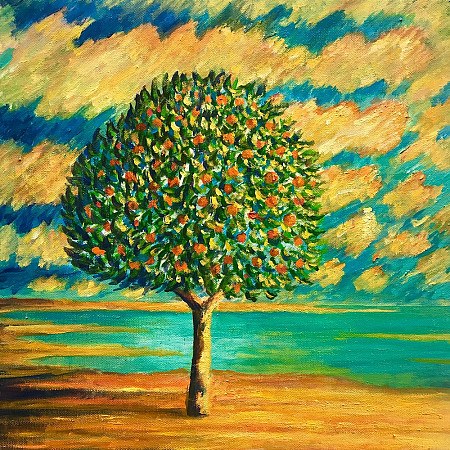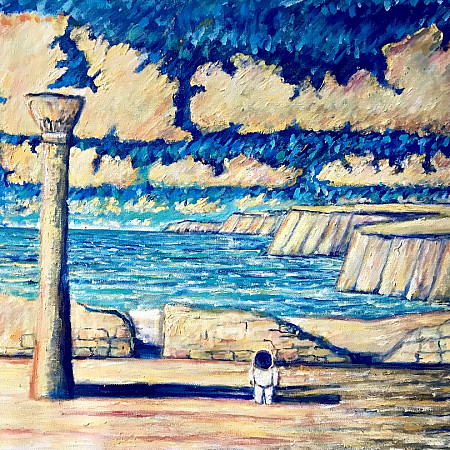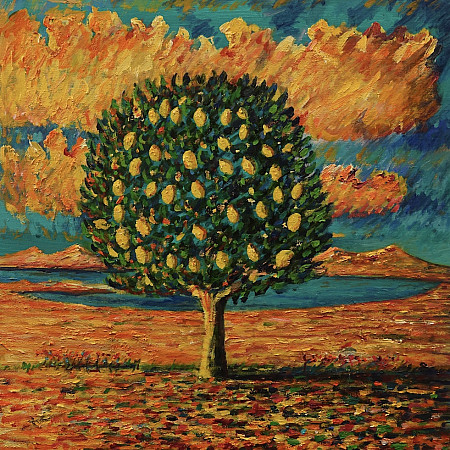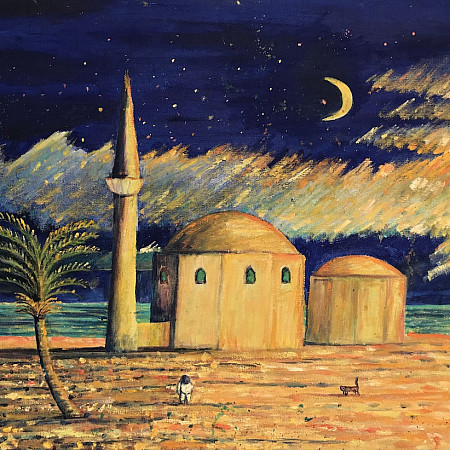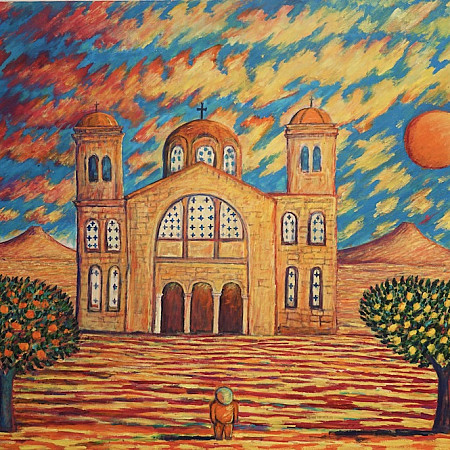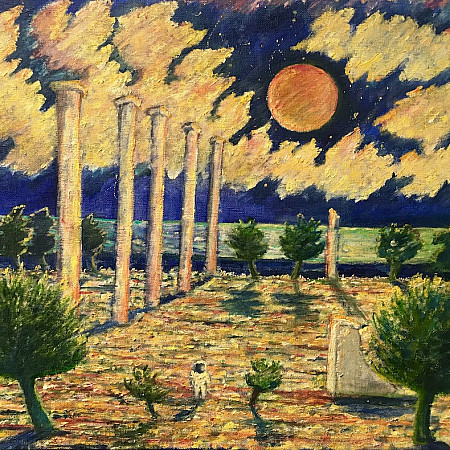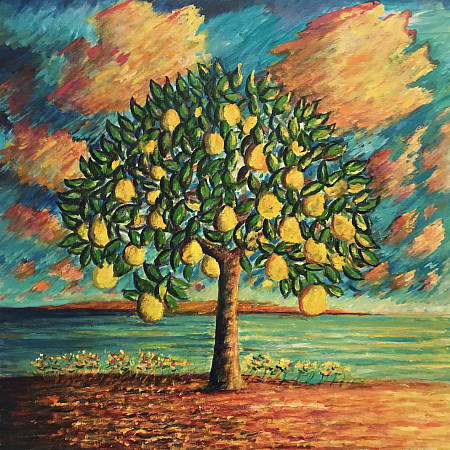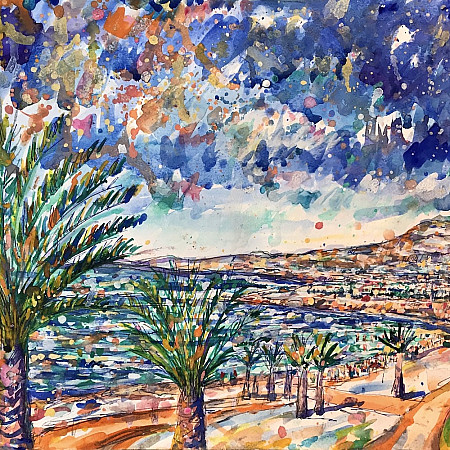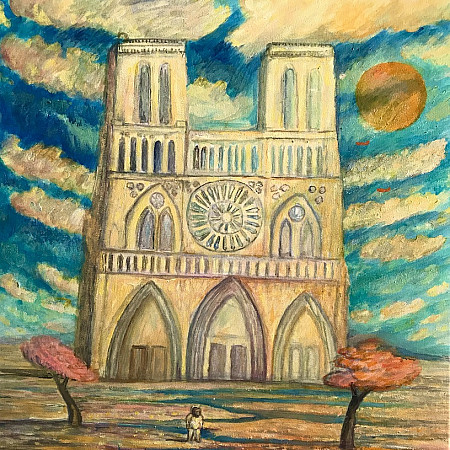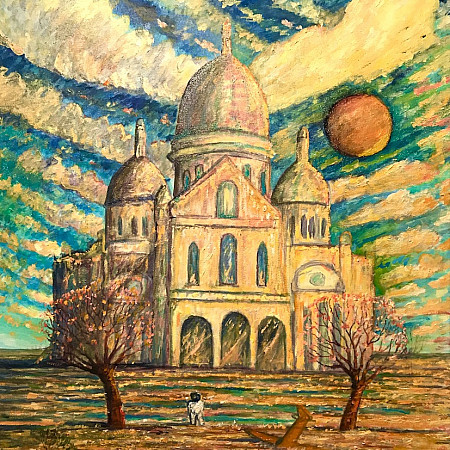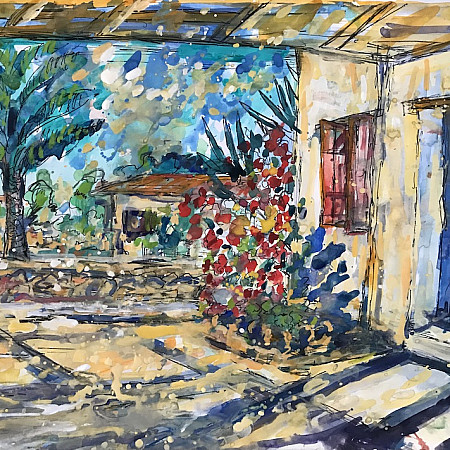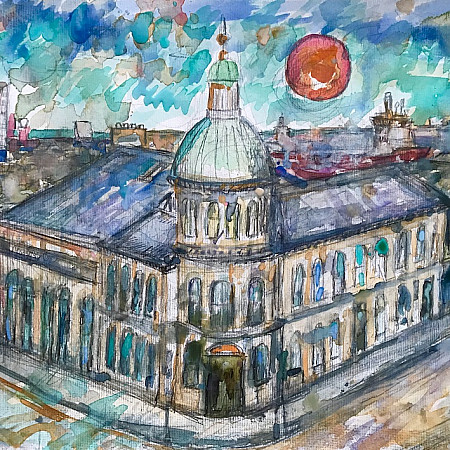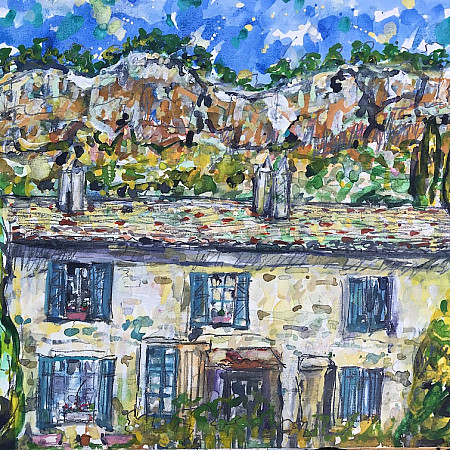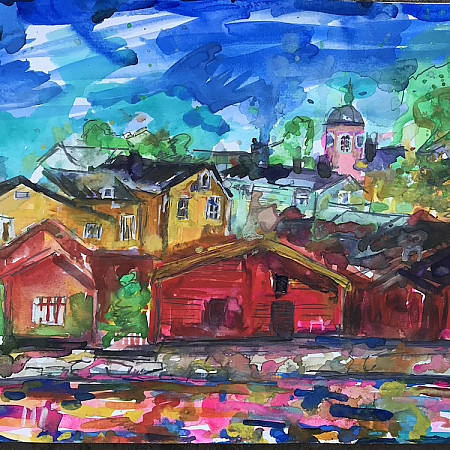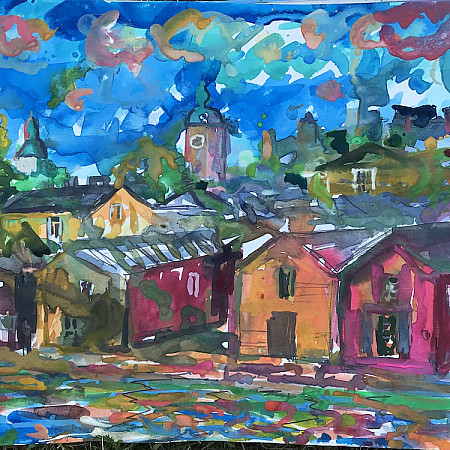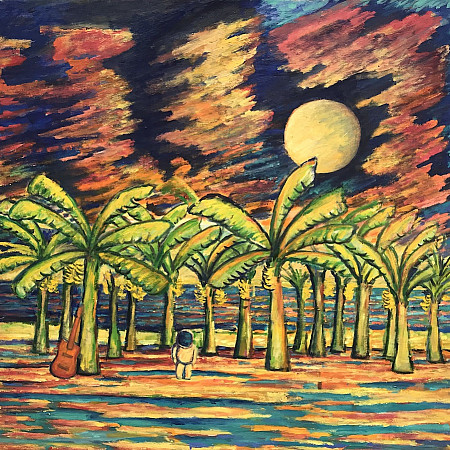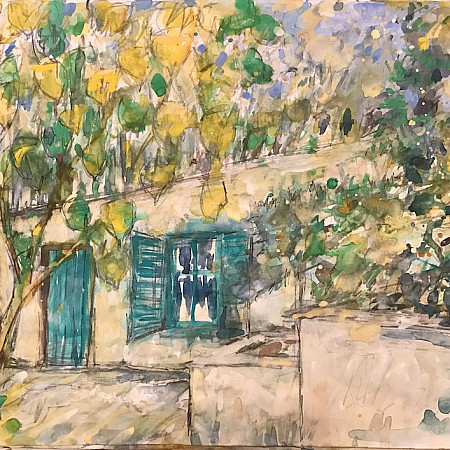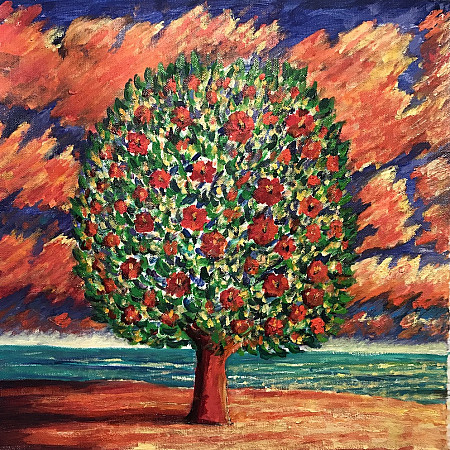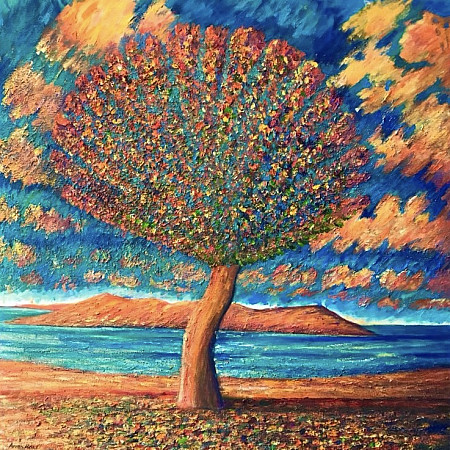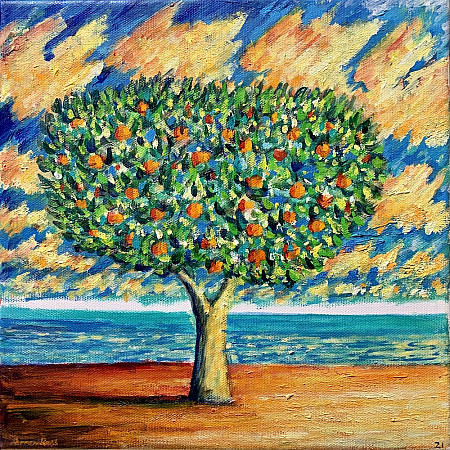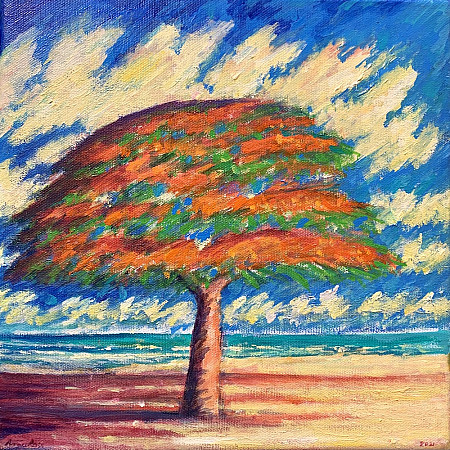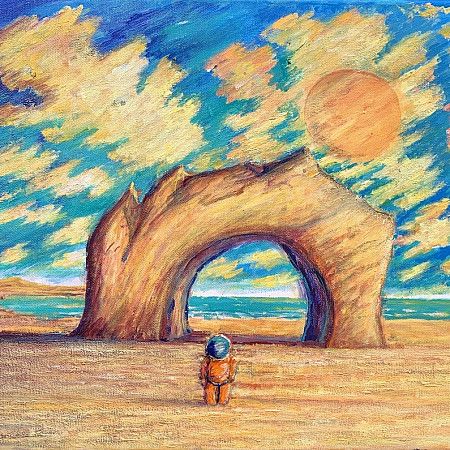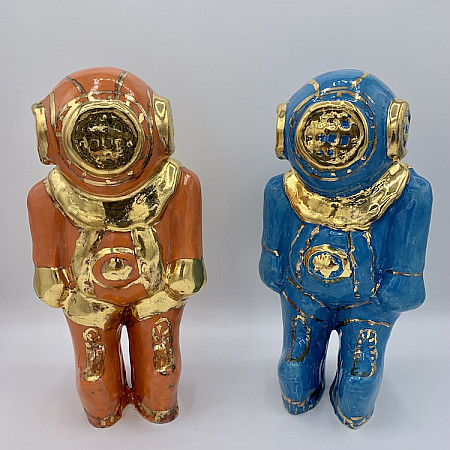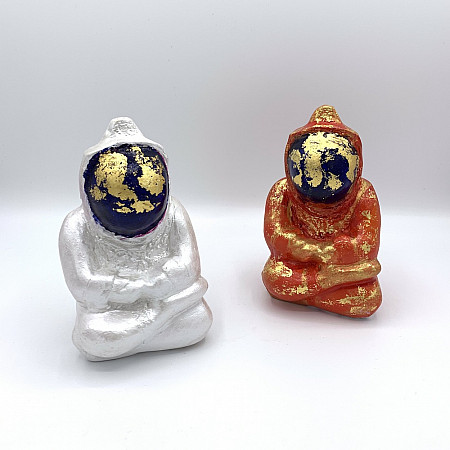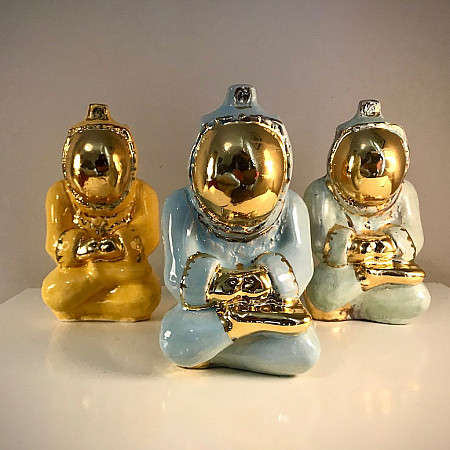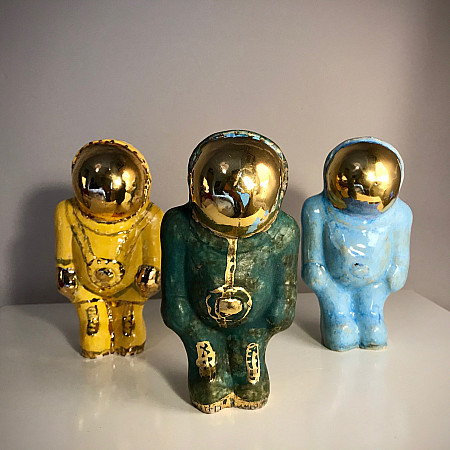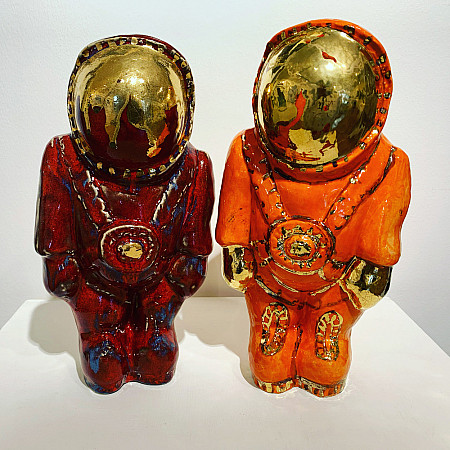Arran Ross – Odyssey
An Artist’s Journey
16 April to 8 May
Introduction kindly provided by Dr Colin J. Bailey.
Arran Ross: the Cyprus paintings
Among the pictures, ceramics and bronzes in this impressive exhibition are many paintings (the majority) that were produced, mostly outdoors, during Arran Ross’s idyllic year-long residency at the Cyprus College of Art which started in October 2020. ‘Odyssey’, the inspired title of the exhibition, reflects not only the value of journeying in its own right but, more potently, the artist’s own voyage of inner discovery, in which the vivid Mediterranean light-effects and the strong saturated colours evident throughout the island, in nature and in its architecture, radically modified his vision. Arran has likened his reactions and experiences to those of his hero, Vincent van Gogh, whose own work was dramatically transformed when he moved from Paris to Arles in 1888.
The vibrant, iridescent watercolours deployed to stunning effect in the two depictions of ‘Turkish House, Cyprus’, where Arran’s kitchen was located, evoke, in spellbinding fashion, the sometimes intense heat and the unchanging luxuriance of the countryside that were for so long part of Arran’s daily existence. Produced ‘in situ’ and ‘en plein air’, following the practice of the early French Impressionists, they – and the oil paintings that were also executed outdoors – encapsulate the positive results of the striking new visual sensations to which Arran was exposed and which resound so spectacularly in his paintings.
Anyone already familiar with Arran’s work will immediately recognise his highly distinctive style and iconic leitmotifs such as the spaceman.
The spaceman features in front of the Greek Orthodox church in ‘Ayia Napia’; among the ruins in ‘Kourion’; and in the foreground of ‘Chlorakas’, which the artist has described as his “favourite painting” in the exhibition. Arran passed this place on weekly walks into nearby Paphos. Though not intended to be topographical or in any sense a literal transcription of the scene, it includes elements that were meaningful to him – the magnificent trees; the sea that was visible, a mile away, from his studio; the delightful little church; the ubiquitous cats; and the breathtaking cloud formations caught in the late afternoon sun.
Arran is particularly pleased with the pictures he made of solitary trees, as in ‘Clementine Tree’ and ‘Frangipani’, both of which are reminiscent of compositions by Caspar David Friedrich, another artist by whom Arran admits to being influenced.
Many of Arran’s paintings have close affinities with Surrealism (with René Magritte especially) but they are enriched not diminished by this association.
Most of the titles of Arran’s works are purely descriptive or self-explanatory. One of the most intriguing and elusive is probably ‘F.U.B.A.R III’, whose acronym refers to a vulgar military expression of the period. The army helicopters, which hover menacingly over the composite landscape, refer to recent periods of conflict between peoples of different religious persuasions. Another painting with an enigmatic title is ‘Tribe’, which recollects a visit to the Museum of Cyprus in Nicosia. Resembling an enormous funeral pyre, with giant flames licking at its summit (a reference to Cyprus’s frequent brush and woodland fires), it recalls the unconventional display of the museum’s archaeological finds. With its reminders of Ancient Egyptian art, ‘Tribe’ reveals another of the many influences that continue to inform and enrich Arran’s artistic vocabulary.
Colin J. Bailey
